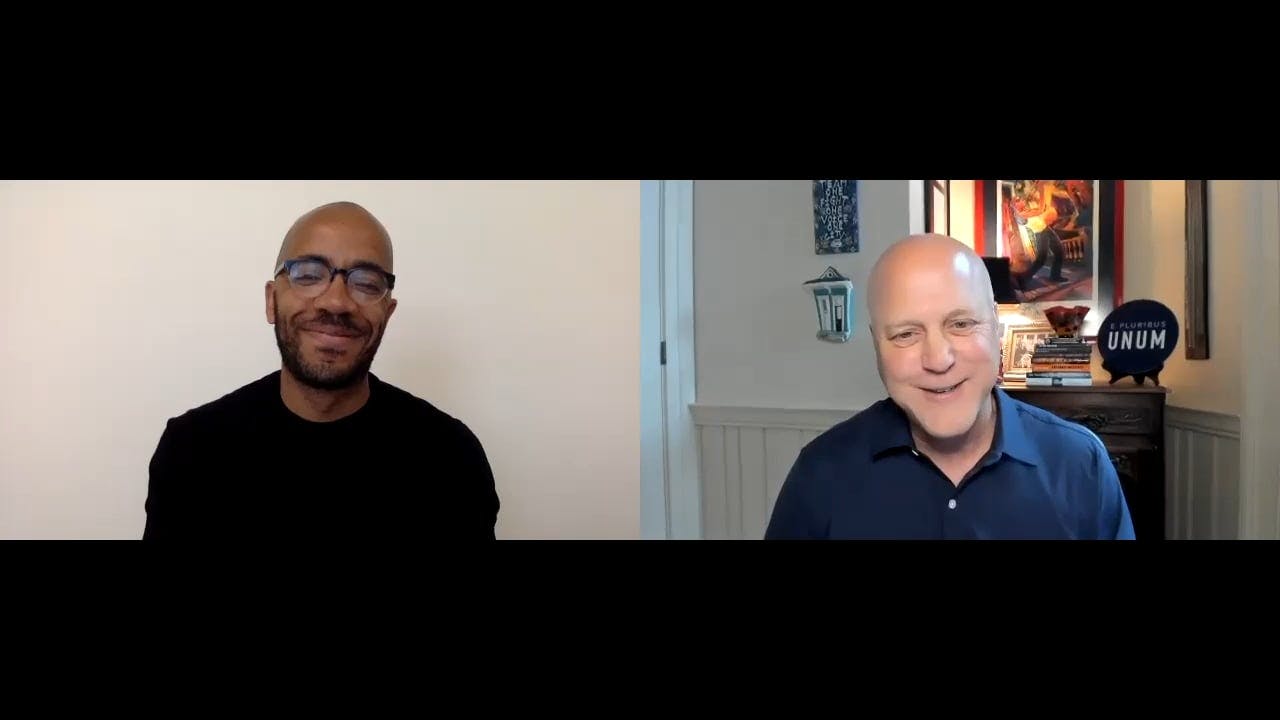
Dial Fellowship
5 min read

As a child in New Orleans, Clint Smith’s daily walk to school took him by a statue of P.G.T. Beauregard, the Confederate general whose attack on Fort Sumter began the Civil War.
“I did not know who P.G.T. Beauregard was,” Smith writes in his forthcoming book. “I did not know he was one of the architects who designed the Confederate national flag. I did not know he led an army predicated on maintaining the institution of slavery. What I knew is that he looked like so many of the other statues that ornamented the edges of the city.”
Smith, an Emerson Fellow at New America, would grow up to be a researcher; a teacher; the author of the celebrated collection of poetry, Counting Descent; and an incisive, indispensable writer on America’s reckoning with the legacy of slavery.
In the forthcoming book, "How the Word Is Passed: A Journey Across the Country that Black America Built" (June 2021), Smith travels to historical sites to examine how they reckon with, or fail to reckon with, their relationship to the history of slavery. In essays about these places—which include Thomas Jefferson’s Monticello plantation in Virginia; Blandford Cemetery, a Confederate cemetery in Petersburg, Virginia; Angola Prison in Louisiana; and, yes, his hometown of New Orleans—Smith examines the way our shared physical spaces reflect, distort, and create our historical memory.
Recently, Smith joined Mitch Landrieu, former Mayor of New Orleans and the founder and President of E Pluribus Unum, for a wide-ranging conversation about the current historical moment, in which they discuss Smith’s new book, the movement to remove Confederate monuments from public places, and better ways to tell the story of America. Their conversation has been edited for clarity, and the full conversation is available in the video above.
I started in the performance-poetry space. I think it helped me find my voice. It helped me develop my politics. It helped me find a writer community. But I’ve always valued writers and thinkers who did work across a range of genres and across a range of mediums. Especially as a Black writer, I think about folks like Zora Neale Hurston and Langston Hughes, and Dubois and Baldwin and Ida B. Wells—all of these writers and thinkers whose art and whose writing were extensions of their political commitments and their commitments to their community. They were less concerned with writing in a specific genre.
So, for me, I’m less concerned with operating singularly in a specific genre than I am with figuring out what genre allows me to tell a story in the most appropriate way. The catalyst for the book, "How the Word Is Passed," actually was the monuments coming down in New Orleans. I began thinking about how there was still so little I knew about the presence of slavery in my own hometown. You go around downtown or you go around the French Quarter—that hotel used to be where slave auctions were held, or that parking lot used to be where people were brought out into the public and flogged. That area used to be where enslaved Africans on Sundays would come and dance, or that area would be where the slave pens were held. There were so few markers of those places. I became really interested in how the actual physical land held the stories of the public’s history.
I’m interested in us re-examining why we feel the need to have so many statues of, quote-unquote, great men, in the first place. I’m interested in memorials to ideas, aspirations, commitments.
The first chapter of the book is going to Thomas Jefferson’s Monticello. What I’m interested in there, is: how does that institution tell the story of Jefferson in a way that captures the totality of who he was? How do you, as an institution, convey that Jefferson was a person who drafted the Declaration of Independence and also, that he was a person who wrote, in "Notes on the State of Virginia," that Black people were inherently inferior to White people, both in, quote, endowments of body, and mind? He said: the slave was incapable of love; the slave was incapable of possessing or sustaining complex emotion. He wrote—of Phyllis Wheatley, considered to be the first published African American woman poet in the history of his country—that her work was, quote, beneath the dignity of criticism. Or how Jefferson is considered the intellectual founding father of this country and he enslaved 600 people, including four of his own children? How do you, as an institution, tell that story in a way that does not erase or obfuscate part of it in order to lift up a singular, mythological narrative?
And then the book ends with me spending time with my grandparents: my grandfather, who was born in Monticello, Mississippi, in 1930, and my grandmother, who was born in Quincy, Florida, in 1940. I’ve spent so much of my adult life asking strangers deeply intimate questions to trace their lives. I’d never done that with my grandparents. For me, walking through the National Museum of African American History and Culture with my grandparents was this remarkable moment, because, we’re walking through, and my grandmother’s pointing to this thing, and this thing and she’s like, “I lived it.” My grandfather went into the room where Emmett Till’s casket was. He was like, “Emmett Till was killed just a few counties over from where I lived.” In another scenario, my grandfather could have been Emmet Till. It was a reminder for me that so many of the photos and videos we see in black and white, so many of the stories that we tell ourselves happened a long time ago, in fact, didn’t happen that long ago at all. My grandfather’s grandfather was a person who was born into human bondage. The idea—that we would tell ourselves that slavery, the history of slavery, has nothing to do with where we are now as a country—is morally and intellectually disingenuous.
I should begin by saying these are hard questions, and I don’t purport to have a definitive answer to any of them.
It’s important to note that there’s a fundamental difference between Confederate statues and other statues. The Confederacy was a treasonous entity that left the United States because it wanted to perpetuate, maintain, and expand the institution of human bondage, with Black people as enslaved people.
With regard to people beyond the Confederacy: as I wrote this book, I had to make sure I always tried to extend my empathy as far as possible. I think about how I feel when I see P.G.T. Beauregard, and I think about what a young Indigenous child is being told when we have a statue of Andrew Jackson, who presided over the mass removal and genocide of Indigenous people in this country. What is that saying to them? Is that so different for them, as a Confederate statue was for me? Those are questions that I think are worth raising and worth wrestling with.
But more generally, I think I’m interested in us re-examining why we feel the need to have so many statues of, quote-unquote, great men, in the first place. I’m interested in memorials to ideas, aspirations, commitments. I wonder: is it more valuable to have a statue of Frederick Douglass, than it would be to have a statue to the idea of abolition? Because Frederick Douglass is somebody I admire a lot, but he’s also someone who said really terrible things about Native Americans. I think that there are ways to make it so that we are centering our ideals and our aspirations, and the imaginative version of who we want to be. It wouldn’t even be memorials; we’d have to have a new language for it—but something that is a reminder of what we are moving toward.
I should also say that both symbols and policy are important. It is not an “either or,” it is both. My concern is that if you tear down a Robert E. Lee monument, but then maintain exclusionary zoning policies in your community, what are you actually doing? If you put a “Black Lives Matter” sign in your yard, but then go to the school board meeting and say that you don’t want kids from certain neighborhoods to be able to be bused into your school, then what are you actually doing? If you are reading an antiracist book, and you’re posting it on your Instagram next to a cup of coffee, but still voting for prosecutors who enact “tough on crime” policies, then what are you actually doing? I think, both the symbols and the gestures are meaningful, but they cannot come at the expense of a larger material and policy-based set of solutions.